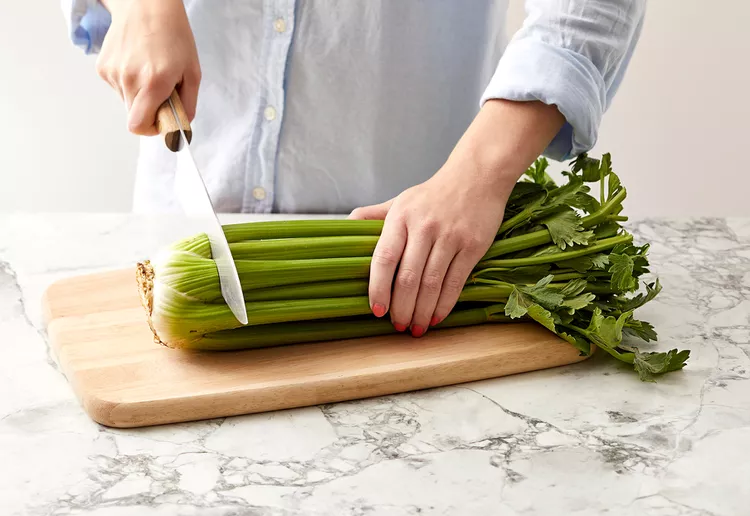How to Regrow Celery from Scraps to Get Bonus Stalks

Don’t throw out the celery base that didn’t make it onto the crudité platter or into the gumbo recipe. It’s not a kitchen scrap; it’s a propagation project. You can use that chunk of unused vegetable to grow a new celery plant. All you need is a celery base, a dish of water, and a sunny windowsill.
The Basal Plate Is the Key
Growing a celery plant from your leftover celery is easy because the bottom part of a celery bunch is where the roots grow. It’s called a basal plate, which is horticulture-speak for the spot on a plant where roots and stems meet. It’s the growth center of the plant and can rejuvenate itself in the right conditions. Here’s how you do it.
How to Regrow Celery from Scraps
Follow these step-by-step instructions for how to regrow celery from that bunch of celery already in your kitchen.
1. Cut off the end of a celery bunch.
Slice 2 to 3 inches off the root end of a bunch of celery. That’s the part you never eat.
2. Put the celery base in water.
Place the celery base into a shallow dish. Fill the dish with enough water to just submerge the celery’s root end (basal plate), not the entire piece. The cut stalks should stick up above the water.
Stick four toothpicks, evenly spaced, around the circumference of the celery base, about 1½ inches from the bottom. The toothpicks act as holders to suspend the celery in the bowl, similar to how you would treat an avocado pit you're sprouting in water. If the base rests on the bottom of the dish, it may be more susceptible to rot.
3. Give it sunlight.
Put the bowl of celery and water near a window where it receives bright but indirect light. A kitchen windowsill is a great choice because growing food where you prepare food adds a nice touch of farm-to-table ambience to the room.
4. Change the water regularly.
Change the water in the dish every couple of days and make sure the celery base never dries out. Fresh water keeps fungal infections and algae growth away.
5. Watch the celery plant grow.
Within a week, you should see small leaves emerging from the center of the top of the celery base. Within two weeks, you should see tiny roots growing from the base and into the water. The outer cut stalks on the base may turn brown, but that’s normal; you can remove them if you like.
6. Move the new plant to soil.
When the celery roots are an inch long, move the new celery plant to a container of potting soil or into the garden. Position the celery plant so the cut end and the new leaves are above the soil and the roots are in the soil. Keep the soil consistently moist but not wet. Celery likes cool weather and rich, well-drained soil. Make sure it has shade in the hottest part of the day, and fertilize it to nourish it. Its desire for cool weather and some shade makes it a great indoor plant.
You won’t be able to grow an entire crop of celery with this method, but a celery base can give you one new celery plant. This project is more about the fun of watching a plant grow, not stocking your kitchen with homegrown vegetables.